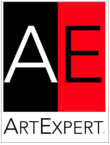
Art is magic, freed from the lie of being truth.
Numerous levels and its facets explain the value. In any case, a broad and deep access to a work is necessary in order to experience its meaning. This is a difficult process about previous knowledge, prejudices, monetary valuations, own experiences and worldviews. Apart from the financial aspect, the value of a work of art goes beyond the work itself. At best, it renews the view of life and leads to an improved attitude to life. That is the real intangible value of art.
An art that nobody understands has therefore no value - for nobody. Because it is not enough if only the artist understands it. But if the artwork already gives someone the chance to grapple with it, its value becomes virulent. If these someones are influential people, multipliers and mediators, general meaning may develop. This also makes it easier to realize financial value enhancement. Of course, a large number of people is not really a criterion. But it feels democratic. Sound opinions and assessments are essential. This in turn also increases awareness and thus increases intangible and financial value.
The idea of quality and market value
The idea of measurable quality of art and price evaluation is based on this idea. It will only take years or decades to see whether there is a fast-moving effect or whether a work of art is sustainable. So it can happen that an artist and his work are completely forgotten - or even rediscovered after a while and perhaps will have an even stronger effect. The fact is: the number of art events, trade fairs, biennials, gallery weekends etc. has multiplied access to artworks. To counteract this trend, the price is used as a regulatory.
Another important parameter in art is the ‘original’ term. Actually this term is misleading, because original maybe everything that was not explicitly created as a fake. And even then - it would be an original fake. The same applies to the term "real". It is to recommend, that the term ‘authentic’ should be used in art history and on the art market. This term describes a work of art as being made by hand of named artist. If the making process is not exceptionally documented, this term will be used in the sense of a convincing expert opinion. But such an expert opinion is only of value if it proves convincing in the scientific dispute. Rights holders of important artists, especially estate administrators or museums, often see this point, which is scientifically a required basis, sometimes differently. In individual cases, this can mean that not only false works are exposed, but also authentic works are prevented. The damage is initially borne by the owners, but generally the public. Because rejecting an authentic work by an important artist will lead not only to financial damage, but can also be in individual cases a cultural crime.
Art has no purpose, but it does make sense. Art is a human cultural product, the result of a creative process. There are countless definitions, probably as many as there are works of art. Leonardo da Vinci understood art as ‘the queen of all sciences, which speaks to all generations of the world’. El Greco saw ‘art wherever you look for it’. Sociologist Theodor Adorno made the definition: ‘Art is magic, freed from the lie of being truth.’
